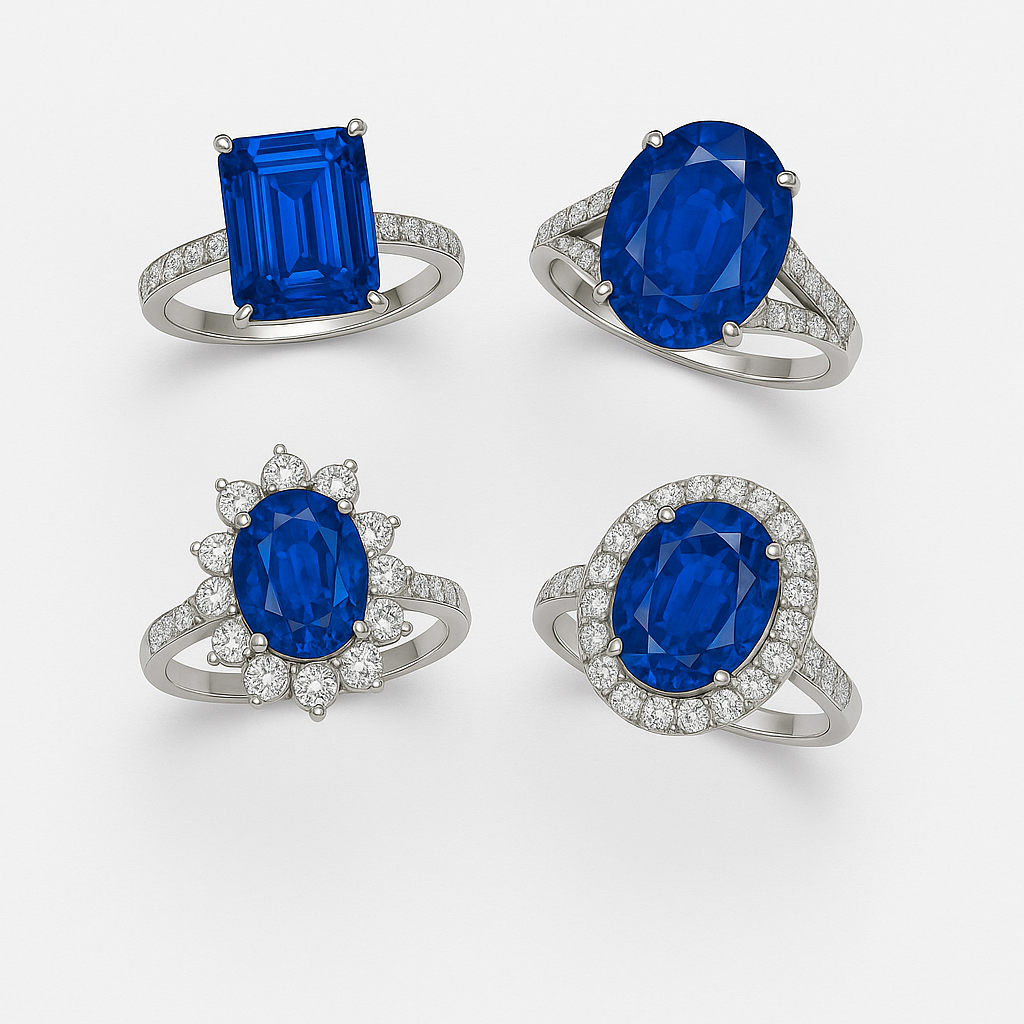Sapphire: The Gem of Wisdom, Royalty, and Timeless Beauty
What Is a Sapphire?
Sapphire is a variety of the mineral corundum, the same family as ruby. While it's most famously known for its deep, royal blue color, sapphires actually come in nearly every color of the rainbow—except red, which is classified as ruby.
The name “sapphire” often refers specifically to blue sapphires, but you'll also find stunning pink, yellow, green, purple, and even white sapphires, each with its own unique charm.
Natural Sapphires
Formed over millions of years beneath the Earth’s surface, natural sapphires develop within metamorphic and igneous rocks under intense heat and pressure. Each stone is one-of-a-kind, shaped by nature with its own distinct size, color, and inclusions. While best known for their signature blue, natural sapphires appear in a wide spectrum of colors—pink, purple, green, orange, teal, yellow, peach, white, and more.
Lab-Grown Sapphires
Created in high-tech laboratories, lab-grown sapphires are engineered to replicate the chemical and physical structure of natural stones. These gems often display more uniform color and clarity thanks to the controlled conditions in which they’re grown. Just like their natural counterparts, lab sapphires are available in a full range of vibrant colors, offering a modern, sustainable alternative without compromising beauty or durability.
The 4Cs of Sapphire: What to Look For
Like diamonds, sapphires are evaluated based on the 4Cs—Color, Clarity, Cut, and Carat weight—but with some differences in what makes each stone valuable.
Color
Color is the most important factor in determining a sapphire’s value. The most sought-after sapphires have a vivid, intense blue hue, often described as “cornflower blue” or “royal blue.” Top-quality blue sapphires have strong saturation without appearing overly dark or inky.
Other hues, like padparadscha—a rare pink-orange sapphire—are also highly prized.
Cut
Unlike diamonds, sapphire cuts are less standardized. Instead, the cut is designed to maximize the stone’s color and brilliance, even if it sacrifices perfect symmetry. A well-cut sapphire reflects light evenly across the surface, enhancing its luster and depth.
Clarity
Sapphires naturally contain inclusions, but the most valuable stones are eye-clean, meaning they have no visible inclusions to the naked eye. Some inclusions, such as silk-like rutile needles, can enhance a sapphire’s beauty by softening its appearance and even increasing its value in rare cases.
Carat Weight
As with most gemstones, larger sapphires are rarer and more valuable, especially when combined with high color quality. A one-carat sapphire with vivid color can be far more valuable than a larger stone with weaker color.
Natural vs. Treated Sapphires
Most sapphires on the market are heat-treated to enhance color and clarity—this is a widely accepted practice. However, untreated sapphires with exceptional quality are especially rare and command a premium. Always ask for certification when purchasing high-value stones to confirm their origin and any treatments.
Sapphire Origins: Why It Matters
The geographic origin of a sapphire can influence its value and appeal. Famous sources include:
- Kashmir: Perhaps the most legendary source, Kashmir sapphires are celebrated for their velvety texture and rich, deep cornflower blue hue. These sapphires are extremely rare, especially since the original mines were depleted in the early 20th century, making them highly valuable and prized in the gem world.
- Burma (Myanmar): Renowned for producing sapphires with an intense royal blue color, Burmese stones often exhibit excellent clarity and brilliance. Although better known for rubies, the region also yields some of the finest blue sapphires available today.
- Sri Lanka (Ceylon): A historic source of sapphires for over two millennia, Sri Lanka produces a wide spectrum of sapphire colors—from classic blues to pinks, yellows, and even padparadscha (a rare pink-orange variety). Ceylon sapphires are known for their brightness and lighter, more vibrant blue tones.
- Madagascar: A more recent but prolific source, Madagascar has quickly risen to prominence for its diverse and high-quality sapphire production. The island yields stones in nearly every color, and many rival the beauty of traditional sources, offering excellent quality at competitive prices.

Why Choose a Sapphire?
- Durability: With a hardness of 9 on the Mohs scale, sapphire is second only to diamond, making it ideal for everyday wear.
- Symbolism: Sapphires have long been associated with wisdom, truth, and loyalty, making them a popular choice for engagement rings and meaningful gifts.
- Style Versatility: From classic solitaire rings to bold modern designs, sapphires adapt beautifully to any setting or aesthetic.
Sapphires are more than just beautiful gemstones—they're symbols of elegance, strength, and timeless style. Whether you're drawn to the rich history of a natural sapphire or the innovation behind a lab-grown stone, choosing the right gem comes down to personal preference and informed decision-making. At Beveli.co, we're here to guide you every step of the way, offering ethically sourced, expertly crafted sapphire jewelry to suit every taste and occasion.





